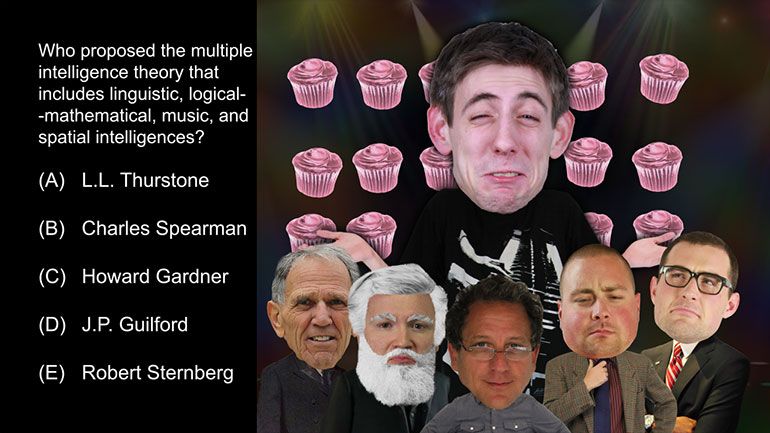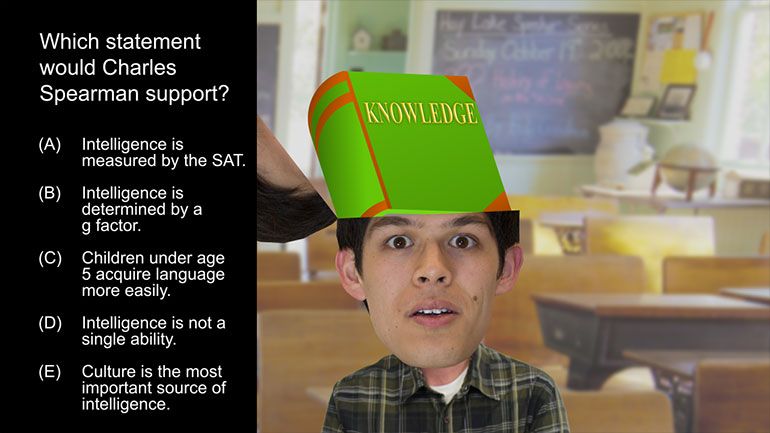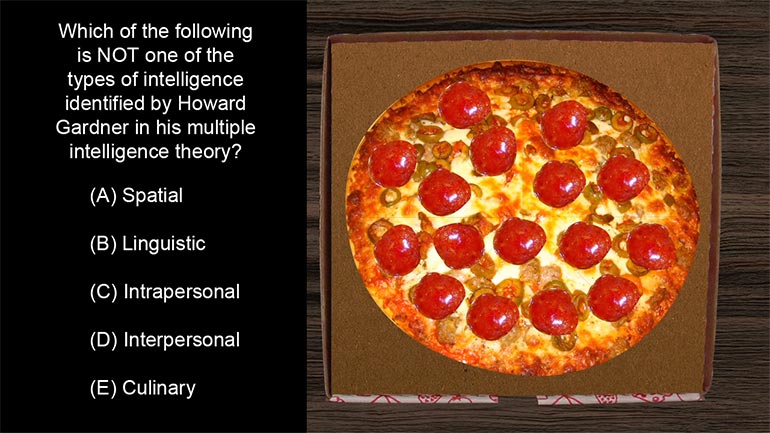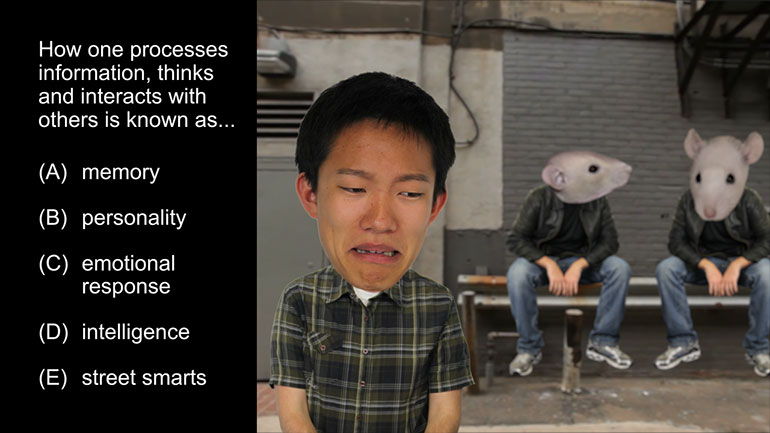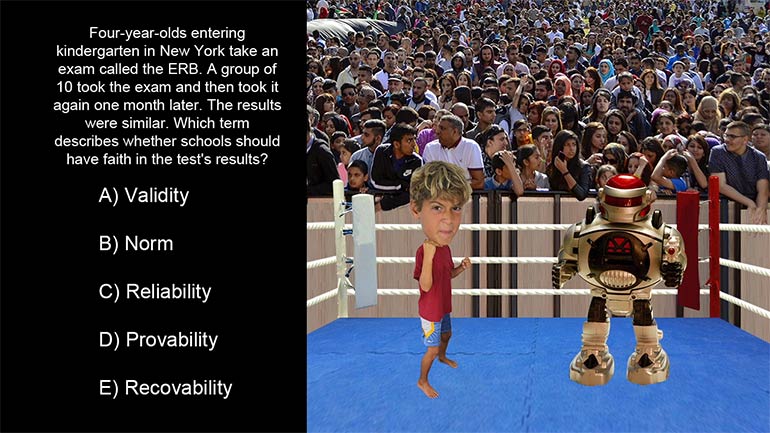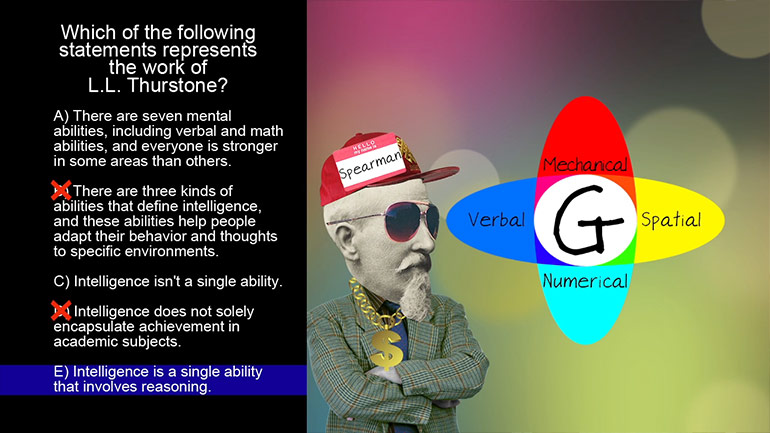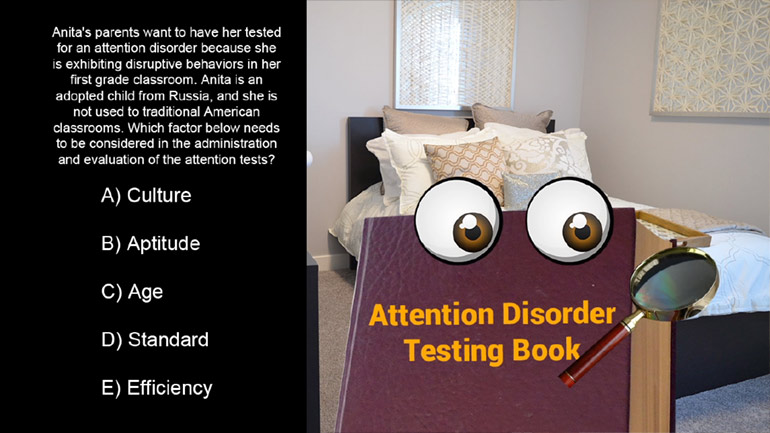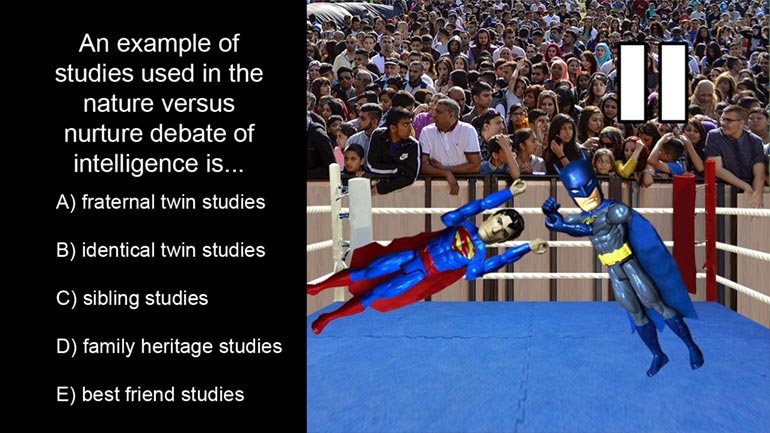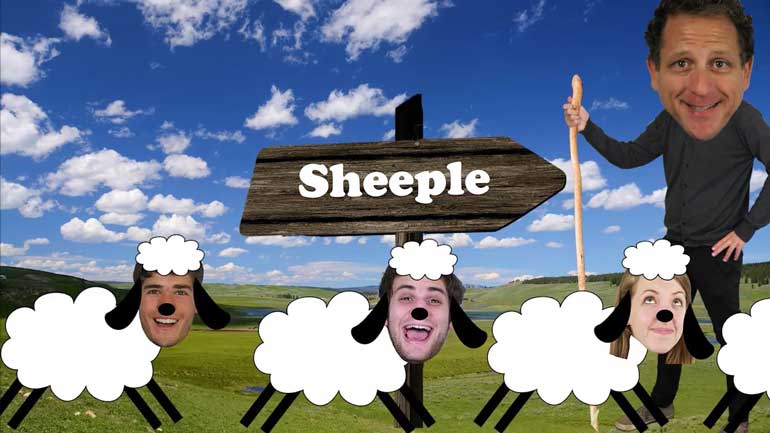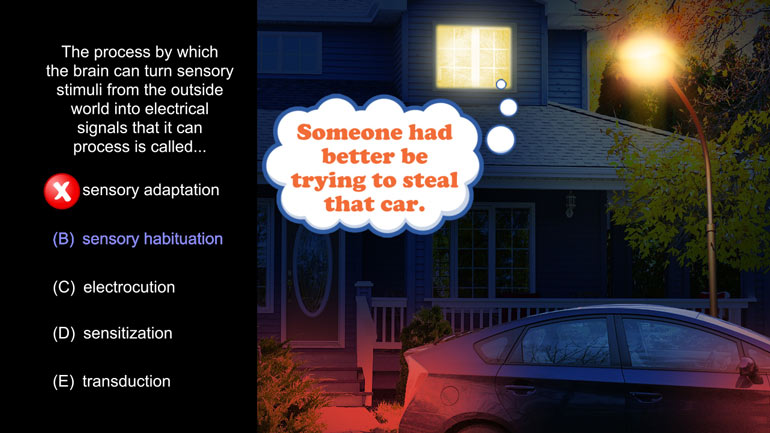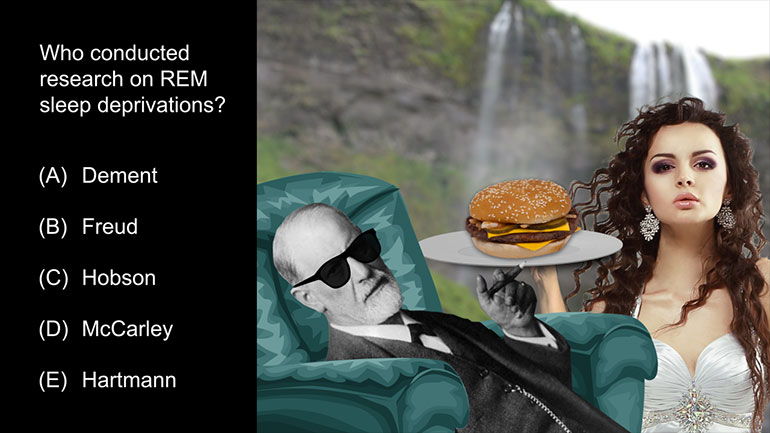ShmoopTube
Where Monty Python meets your 10th grade teacher.
Search Thousands of Shmoop Videos
Testing and Individual Differences Videos 11 videos
AP Psychology 1.1 Testing and Individual Differences. Identify the test in which all conditions are exactly the same for everyone taking it.
AP Psychology 1.2 Testing and Individual Differences. Which type of test is being taken?
AP Psychology 1.3 Testing and Individual Differences. Which researcher proposed the multiple intelligence theory?
AP Psychology 2.1 Testing and Individual Differences 86 Views
Share It!
Description:
AP Psychology 2.1 Testing and Individual Differences. Which of the following is not one of the types of intelligence in Gardener's multiple intelligence theory?
Transcript
- 00:04
And here's your shmoop du jour brought to you by Howard Gardner
- 00:07
a very intelligent man who has yet to figure out what to do with his hands [Howard Gardner photographs along a corridor]
- 00:11
when being photographed... All right which of the following is not one of the types of
- 00:18
intelligence identified by Howard Gardner in his multiple intelligence
- 00:23
theory.. and here the potential answers [mumbling answers]
Full Transcript
- 00:30
All right.. American developmental psychologist
- 00:32
Howard Earl Gardner is best known for his theory of multiple intelligences [Howard Gardner smiling with his hand on his chin]
- 00:36
which differentiates intelligence into specific modalities as opposed to
- 00:42
understandings of intelligence as a singular ability as held by
- 00:46
psychologists like Charles Spearman okay so we got modalities versus the
- 00:51
individual singular thing okay, so let's take a close look at each slice of pizza [A pizza in a box appears with a man holding a knife and fork]
- 00:55
and see what answer doesn't fit don't get too excited it's just a metaphor...all
- 01:00
right slice one is visual spatial which describes the ability to draw [A pizza slice drawing]
- 01:05
conceptualize 3d spaces, do puzzles, and even daydream artists architects and
- 01:11
engineers would love this slice, the second slice is bodily kinesthetic and
- 01:16
describes one's mastery of their own body this slice favors athletes dancers [slice of pizza working out]
- 01:21
and other hands on lonely types..All right next this third slice of pizza is the
- 01:27
musical slice and describes ones penchant for rhythm and sound naturally if you're [Slice of pizza playing a guitar on stage]
- 01:33
at a party you'd want to feed this slice to the band.. this fourth slice however
- 01:37
would go to the host of the party as it's the interpersonal intelligence
- 01:41
slice that describes the ability to effectively interact with others and we [Slice of pizza interacting with another slice of pizza at a dinner table]
- 01:47
lack a lot of that at shmoop here grouch, grouch. The fifth slice
- 01:50
metaphorically represents intrapersonal intelligence; intelligence refers to the
- 01:55
ability to understand one's own desires goals and interests and to act and be [A slice of pizza thinking about it's own goals and desires]
- 01:59
the person you want to be, you know like in the army ad. This slice wouldn't
- 02:03
actually be eaten by anyone because, well it doesn't actually exist and only
- 02:08
serves to better illustrate our lesson yeah happy Gardner all right well this
- 02:12
sixth slice of pizza is just a piece of pizza and it's [one remaining slice of pizza in a box]
- 02:15
nothing at all to do with the sixth kind of intelligence which is linguistic
- 02:18
intelligence and describes the ability to use words effectively journalists and
- 02:23
poets wouldn't care about this slice of pizza at all..All right the seventh kind
- 02:28
of intelligence is logical mathematical and naturally refers to one's ability to
- 02:32
use numbers think mathematicians and statisticians and this final slice of [Slice of pizza beside a list of numbers]
- 02:37
pizza completely comprises naturalistic intelligence, i.e the pepperonis on the
- 02:42
pizza are actually made of things like the ability to recognize flowers and [slice of pizza looking at flowers in a meadow]
- 02:46
animals and anything to do with the natural world it would be wholly
- 02:50
consumed by hunters and farmers and botanists. This last slice isn't just a
- 02:55
metaphor it's quite literally naturalistic intelligence incarnate [Slice of pizza, hunter, botanist and farmer walk away together]
- 02:59
looking at our answers and it's clear that , culinary is the odd one out
- 03:04
meaning it's the answer we're looking for, though if you've made it through this
- 03:08
entire pizza video you've probably gotten a pretty keen sense of culinary
- 03:11
intelligence even if that well technically isn't to think..[Richard Gardner thinking about pizza]
Related Videos
AP Psychology 2.2 Social Psychology. Which of the following was an independent variable manipulated in Asch's research?
AP Psychology 1.1 Personality. According to Freud, these three parts of personality are constantly in conflict.
AP Psychology 1.1 Sensation and Perception. The process by which the brain can turn sensory stimuli from the outside world into electrical signals...
AP Psychology 1.1 Social Psychology. Which of the following best describes social psychology?
AP Psychology 1.1 States of Consciousness. Who conducted research on REM sleep deprivations?


